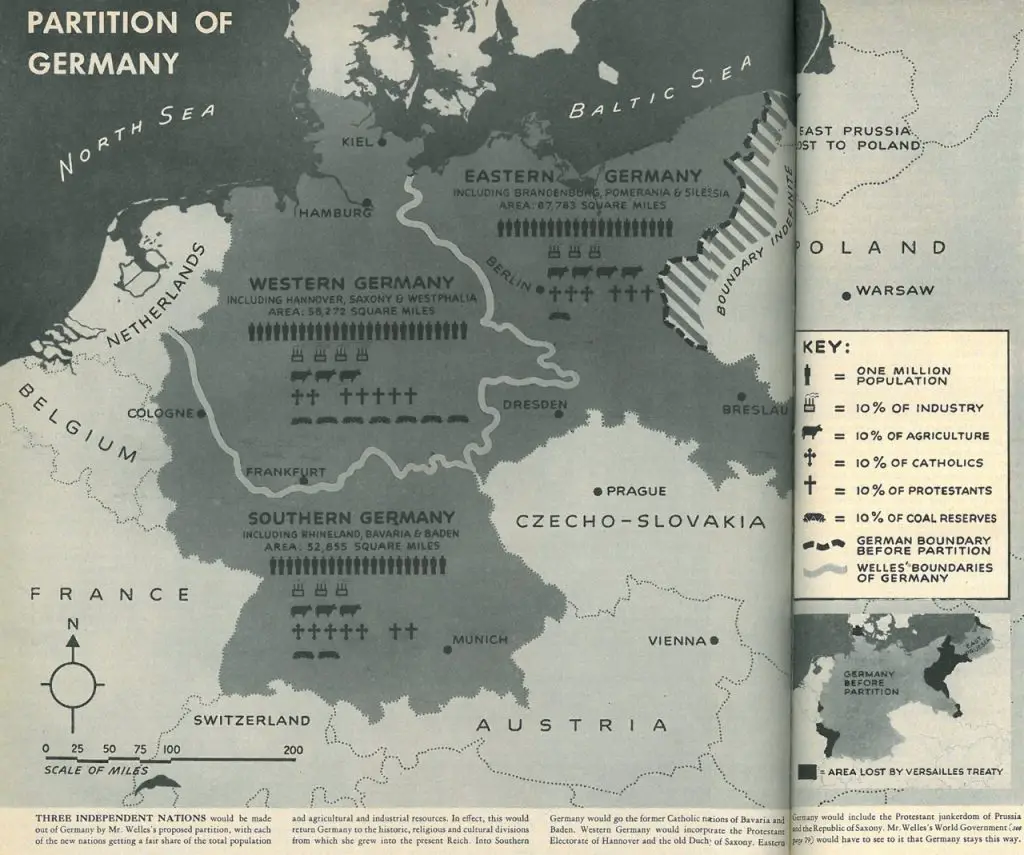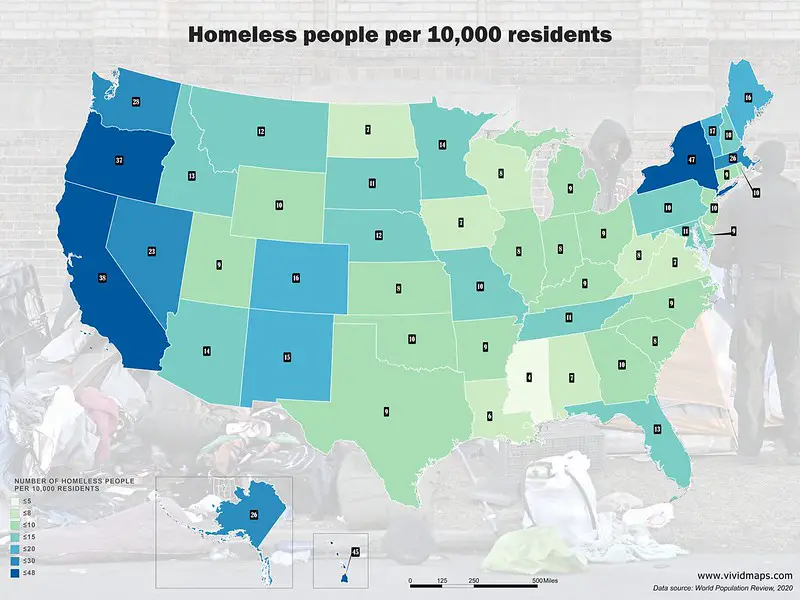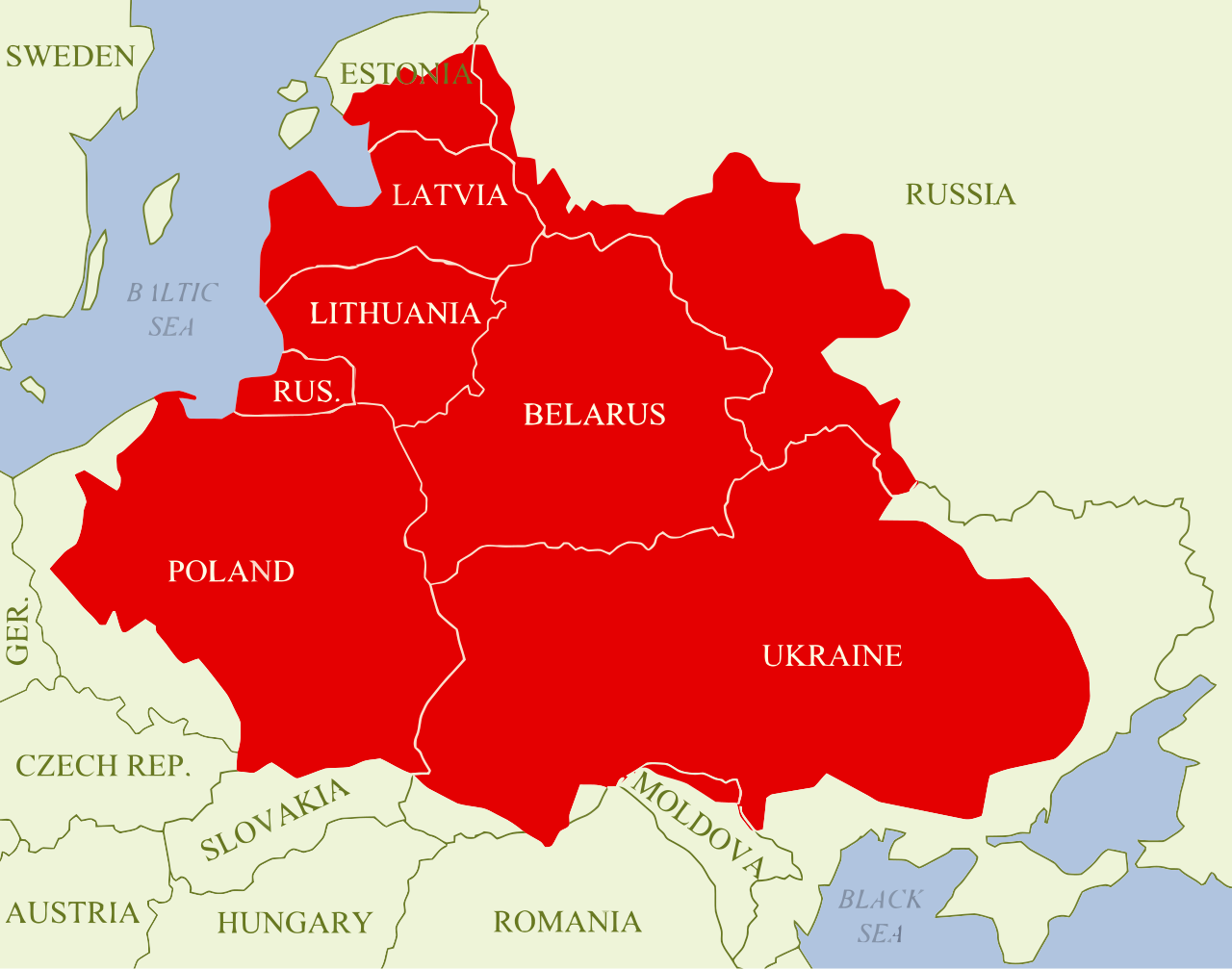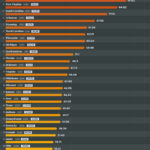Partition of Germany
The situation in Germany after the Second World War was disastrous. Millions of Germans were homeless from Allied bombing operations that demolished entire cities. And millions more Germans living in Poland and East Prussia became exiles when the USSR exiled them. With the German economy and governance in shambles, the Allies decided that Germany must be occupied after the war to guarantee a peaceful transformation to a post-Nazi state.
What the Allies never thought, though, was that their temporary solution to manage Germany into 4 occupation zones, each governed by a different Allied army, would finally lead to a split Germany.
Map of a proposed partition of Germany into three Independent Nations (1944)
Here is the map devoted to the separation of Germany published in LIFE magazine, on July 24, 1944.

“Three independent nations would be made out of Germany by Mr. Welles’s proposed partition, with each of the new countries getting a fair share of the total population and agricultural and industrial resources. In effect, this would return Germany to the historical, religious, and cultural divisions from which she grew into the present Reich.
Into Southern Germany would go to the former Catholic nations of Bavaria and Baden. Western Germany would incorporate the Proresraot Electorate of Hannover and the old Duch of Saxony.
Eastern Germany would include the Protestant junkerdom of Prussia and the Republic of Saxony. Mr. Welles’s World Government would have to see to it that Germany stays this way.”
Later, other plans for the partition of Germany began to appear.
Germany: Zones of Occupation (1946)
This map, created by the United States Army in 1946, depicts the partition of Germany between the various Allied powers after the end of World War II.

After all the occupied territories had been returned to their original countries, as is the case with Czechoslovakia or Austria, the Potsdam Conference takes place, in which we divide the territory of Nazi Germany as follows:
- Poland gets southern West Prussia.
- The Soviet Union obtains northern West Prussia, which becomes the Kaliningrad exclave.
- The Oder-Neisse line is established, the east of which becomes part of Poland.
- The United Kingdom, the United States, and France share control of southern and western Germany, which would end up unifying to form the new country of West Germany.
- The Soviet Union takes control of the part west of the Oder-Neisse line, which would become the German Democratic Republic or East Germany.
- Bremen comes under a joint administration of the United Kingdom and the United States that would become part of West Germany.
- Berlin is under the joint administration of the United States, the Soviet Union, France, and the United Kingdom, which would cause the division of the city in two and, a few years later, the erection of the Berlin Wall.








